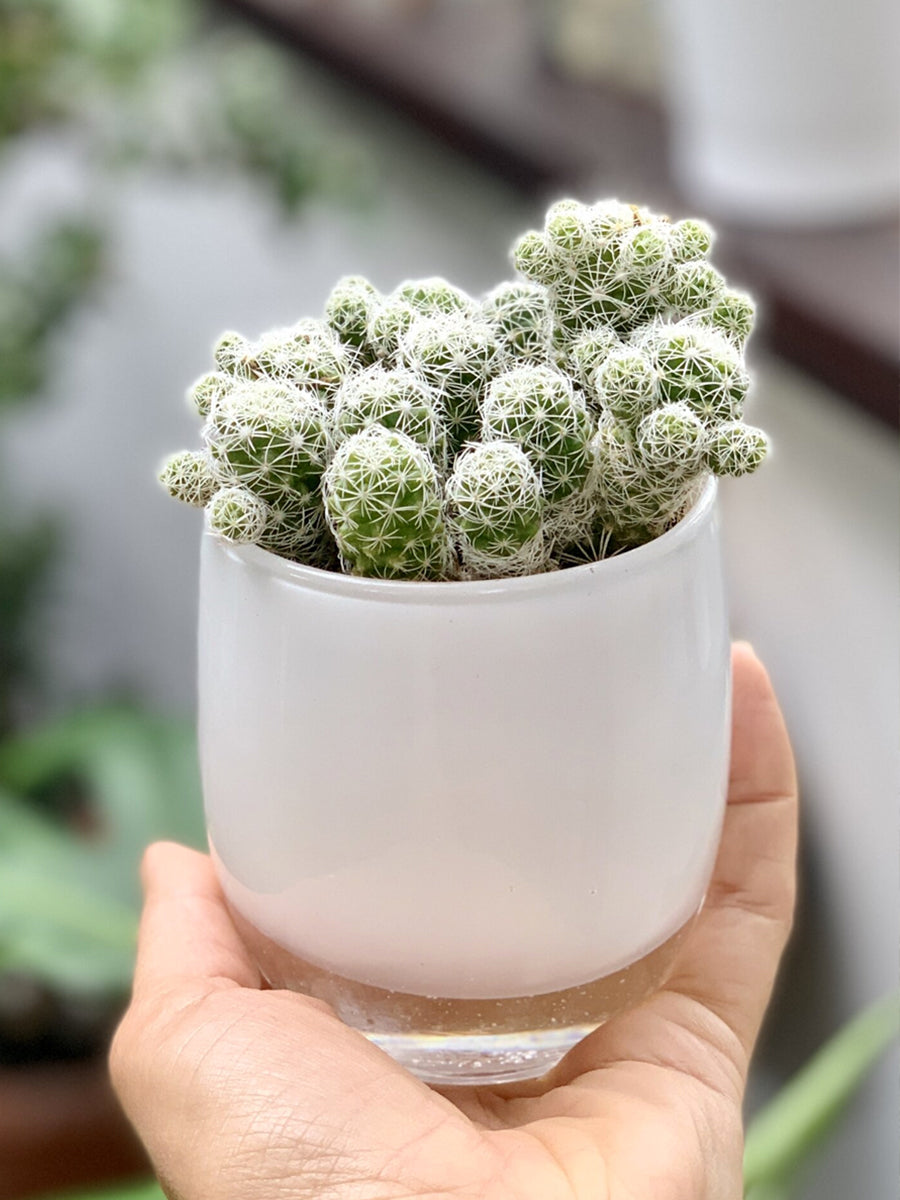
Tips for potting up houseplants in unique vessels
If you are anything like me, you have an heirloom or vintage vessel in your world just begging to be put on display. And, if you’re anything like me you look at said vessel and think, "Wouldn’t it be more amazing with a plant nestled inside?”
Of course it would!
But how? You wouldn’t dream of drilling a hole in such a precious object. Is there a sustainable way to plant without a drainage hole? How can you avoid overwatering and keep your plant thriving?
Here are our best tips from years of experience and countless success stories.

Tip One: Choose the right type of plant
Before we begin, I invite you to hop over to our Plant Parent Personality Quiz
This is a quick and fun way to determine which plants may be right for you and your pot too.
If you want to just get right to it, then here are my general guidelines:
I have found the best plants for this particular potting situation are succulents, cacti and sansevieria. They are very happy to be on a strict watering schedule, and are much easier to regulate as seasons change and watering needs shift slightly. They are also very forgiving if you happen to forget to water them for many weeks or even a few months!
Tip Two: Understanding the unique requirements of your plant
After acquiring your plant, leave it in a pot with plenty of drainage for one month to understand its watering needs. If it is a succulent or cactus, place it near a brightly lit window or under grow lights for maximum UV exposure. I recommend a window with southern or western exposure. If you chose a pothos, zz plant, fern, calathea, or snake plant, these can handle less light and adapt well to most locations (which is why you see them in hotel lobbies and office buildings). They are fairly forgiving and generally low maintenance.
Tip Three: Planting
After you’ve observed and understood your plant’s watering and light needs, it’s time to plant it in that amazing vessel! Look at the vessel and visually dissect it into three parts, like the layers of a cake or a parfait… you’ll be creating a soil parfait!
-The bottom layer you will place a drainage substrate like pea gravel, activated charcoal, course sand, or a combination. You’ll want this layer about an inch or two thick, depending on the size of your vessel. That’s your foundation.
-For the middle layer, you will add a well draining soil, like a cactus soil mix. Be sure you chose a soil mix with plenty of pumice/perlite! This will increase moisture and nutrient retention of the potting soil and act like reservoirs, retaining water and nutrients and releasing them when needed.
-For the top layer, gently place the roots of your plant, then cover and surround them with more cactus/succulent soil. Be sure to completely cover the roots in and then press down firmly on the soil to give your plant plenty of support.
Tip Four: Using a Cache Pot/Nursery Pot
This is perhaps the easiest method, the only tricky part is finding the right size cache pot to fit nicely inside your vessel. That said, just find one that's close to the right side and give it a trim. You can hid any height or size gaps by topping off your plant with a beautiful layer of moss for a vibrant, soft look. And, added bonus, moss will keeping your plant hydrated for a bit longer period of time while giving your houseplant a forest feel.
When it comes time to water you can simply water (add a dose of Sacred Soil Tonic for optimal growth and health) with the plant as is or you can remove the nursery/cache pot and plant and bring it over to the sink for a drink.
*zero waste tip: you can repurpose plastic or aluminum lids (like from a yogurt container or jam jar) to use as a water catching tray if your plant is just in a nursery pot too.
-Lastly, water and feed your plant according to the environmental needs. During the spring and summer months when your plant is photosynthesizing and growing and drying out more quickly, be sure to give it a dose of nutrition to boost healthy growth. Since you’ve been watering and observing your plant for a few months now, you will know exactly how much and how often your plant likes to get hydrated. Nice work plant parent! Enjoy the newest addition to your Sacred Space!
All the best to you dear friends,
Karina


